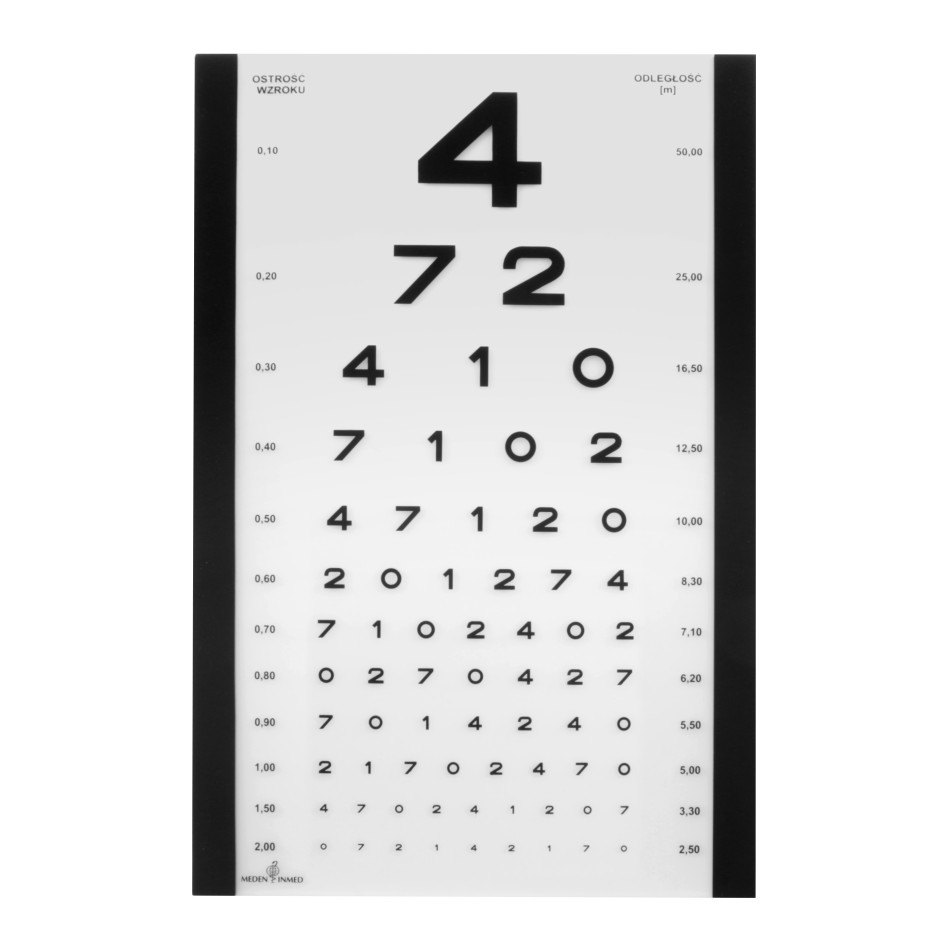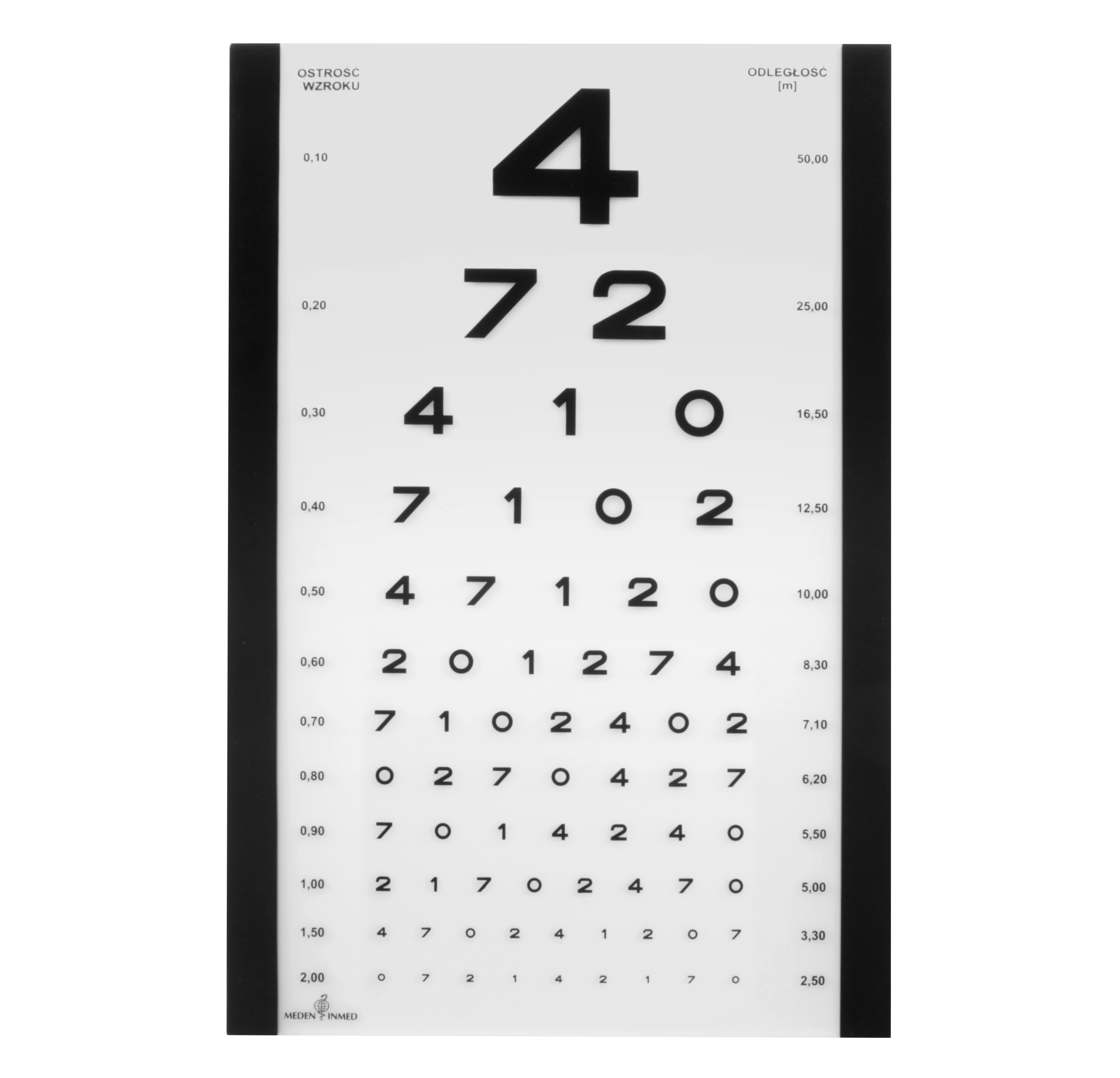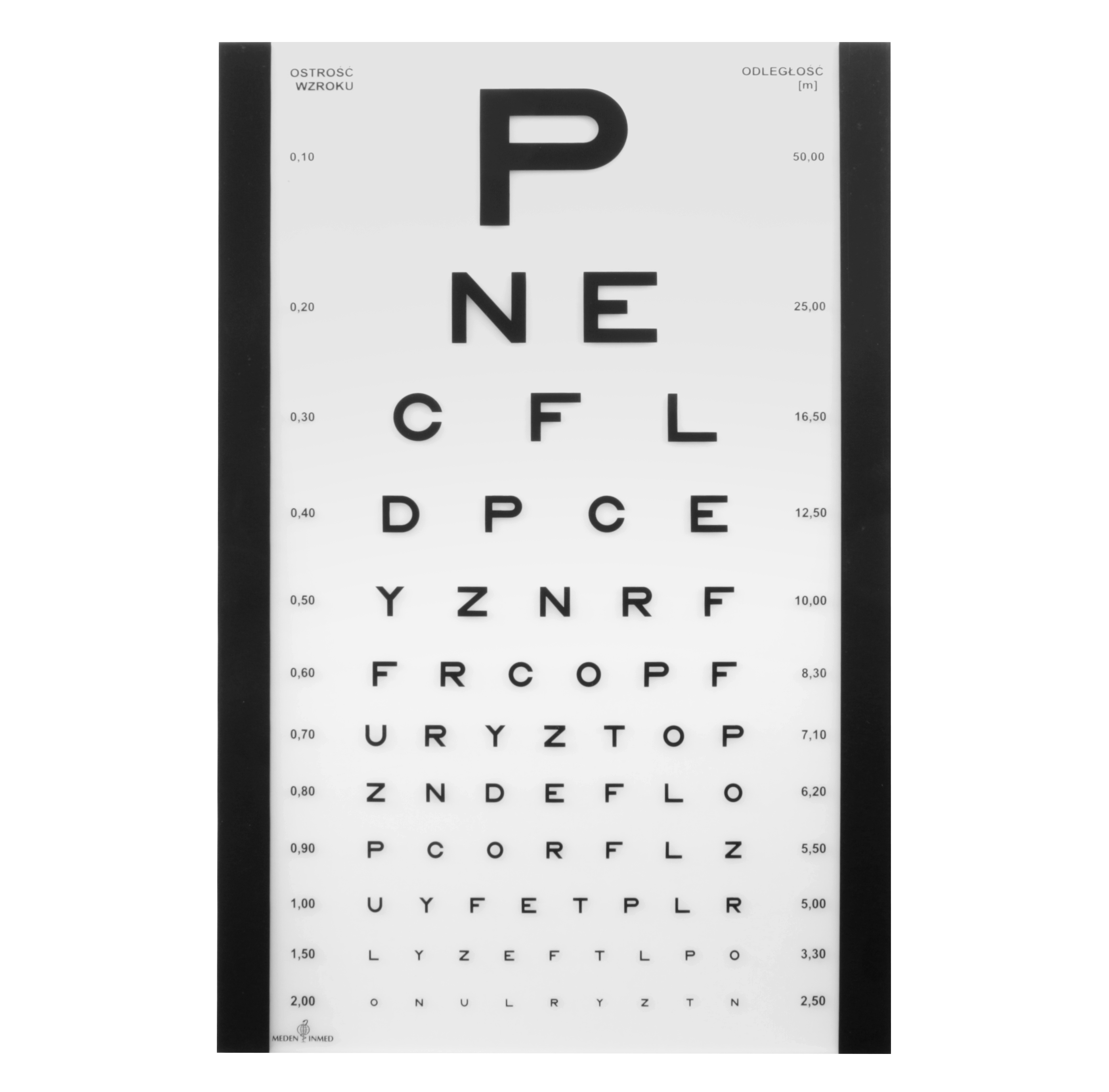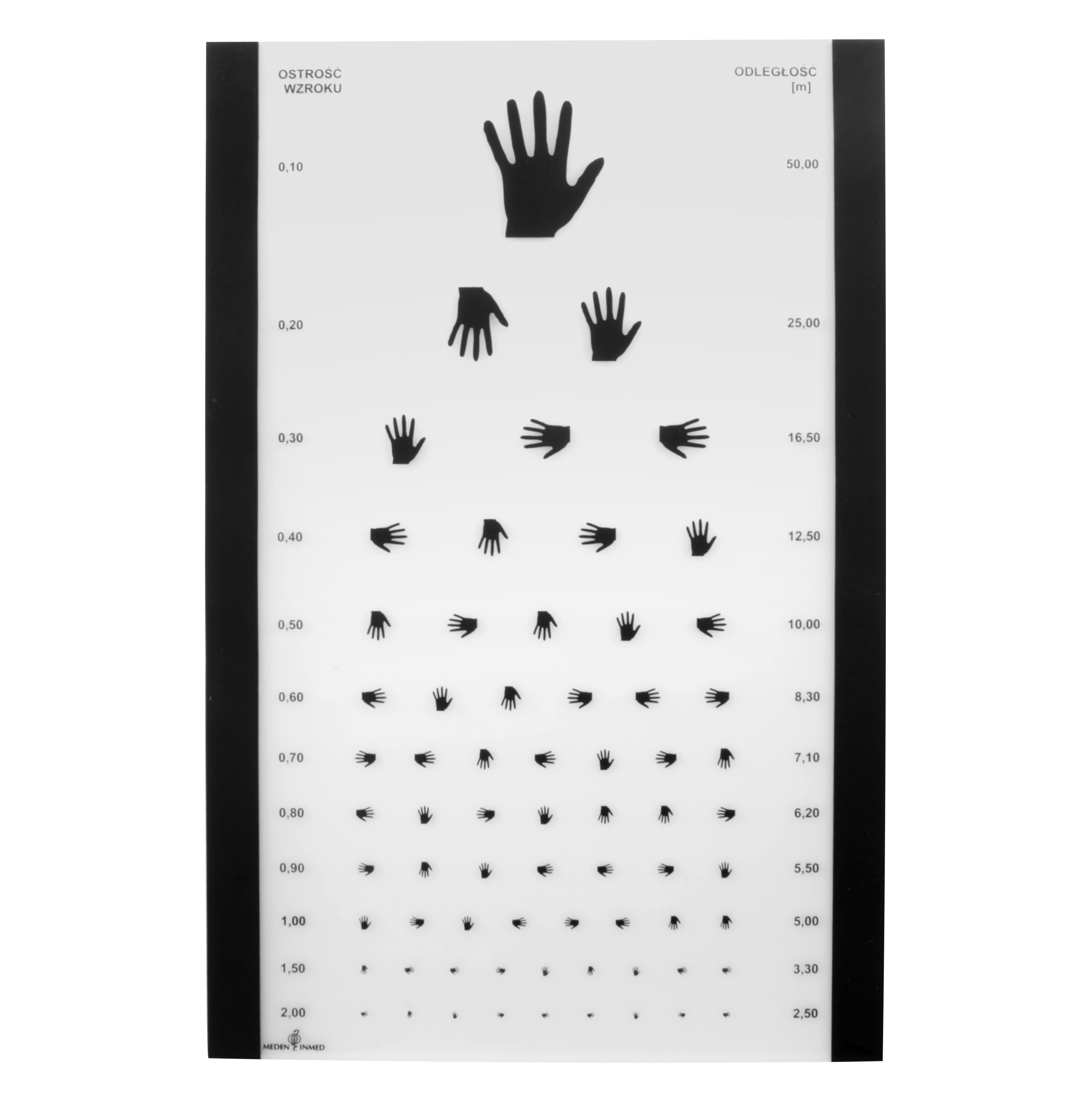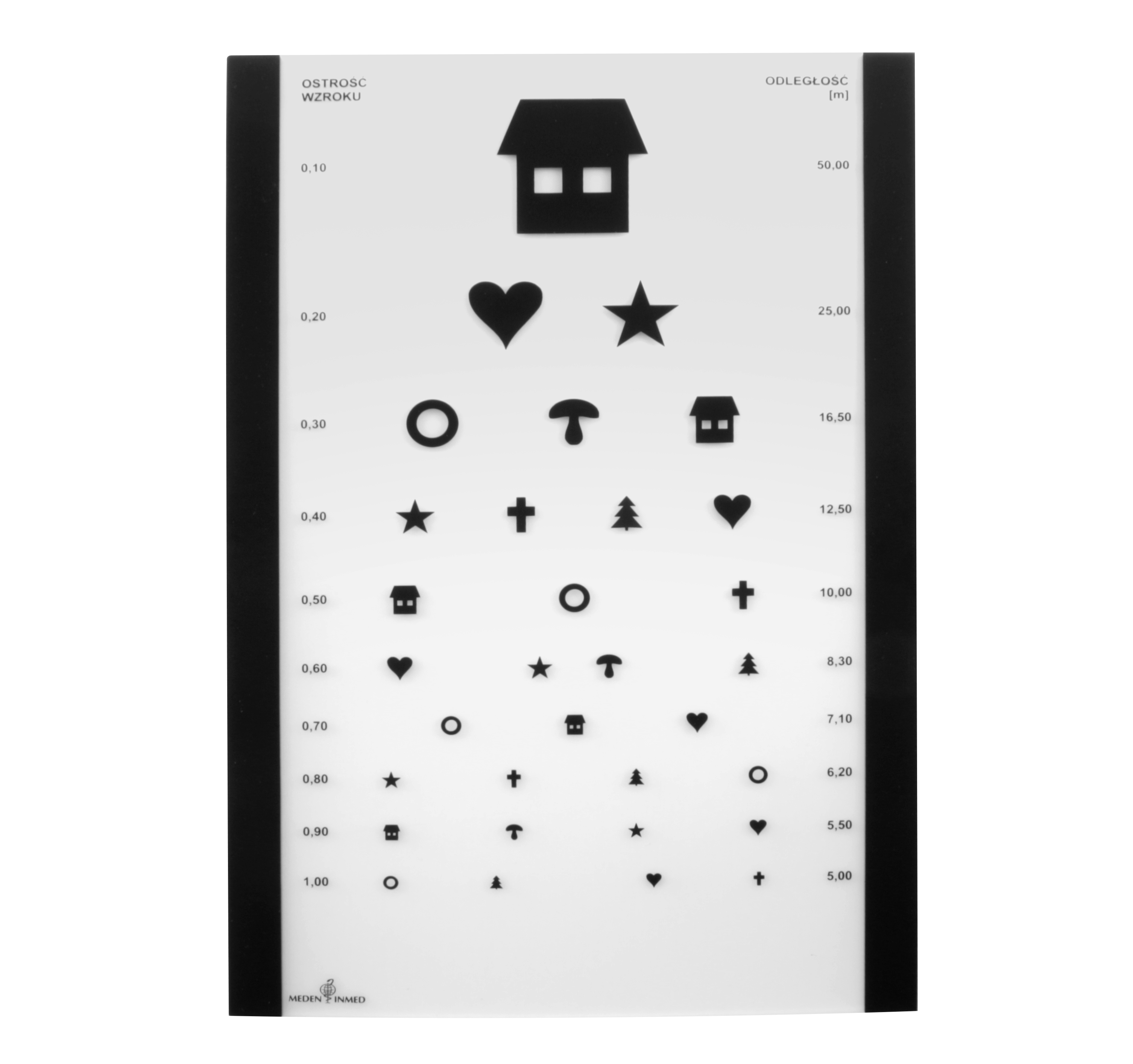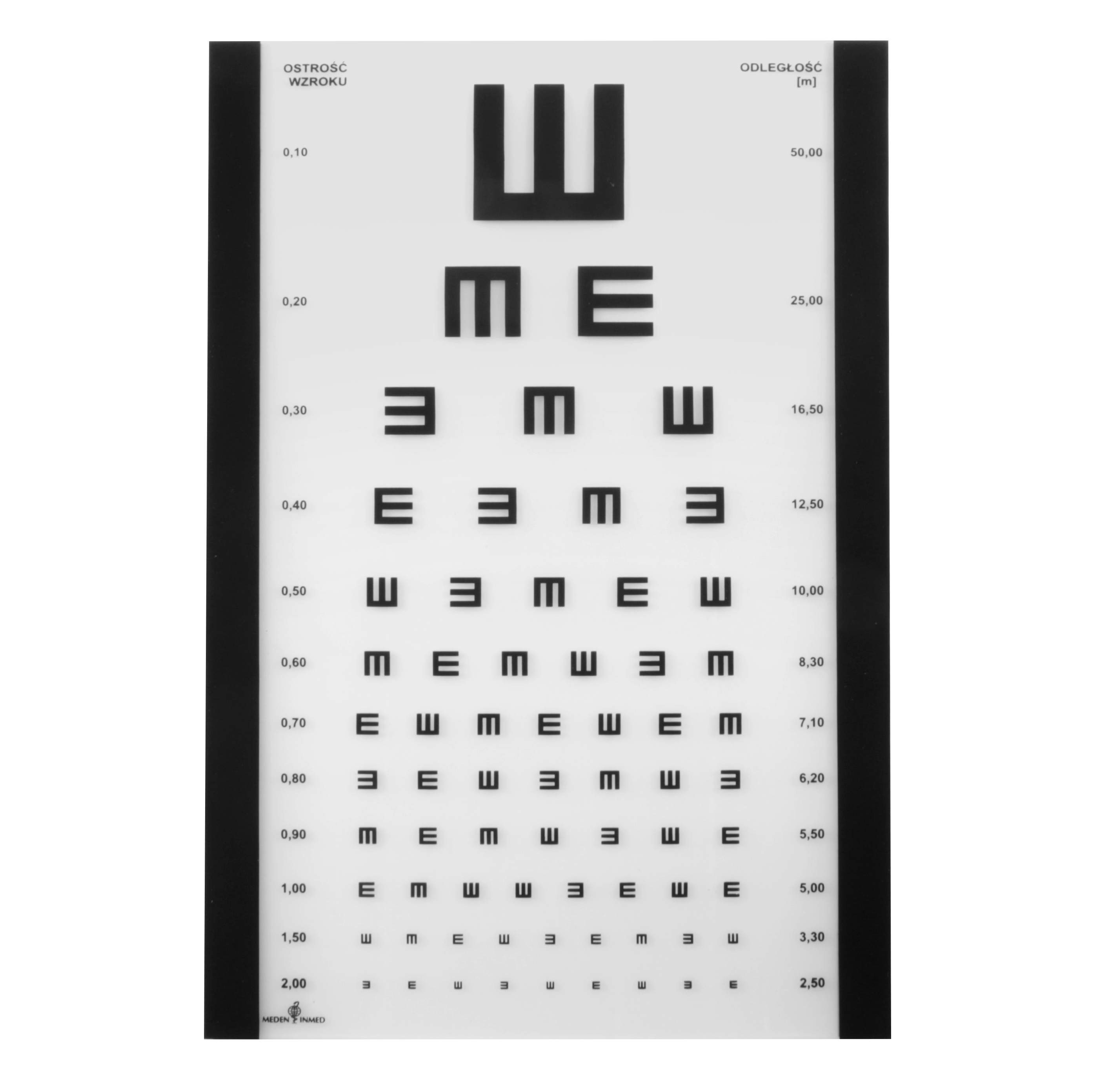OKO is an electronic, illuminated eye chart for visual acuity testing. The board's operation is controlled wirelessly using a small infrared remote control.
Product photos on the website are for reference only. They may differ slightly from the actual product. Manufacturer hereby reserves the right to change design that would not disturb the principal functionality and safety requirements.
OKO - Eye chart
The OKO ophthalmoscope board is an electronic, backlit ophthalmic chart designed for professional visual acuity testing and evaluation. It is wirelessly controlled via an infrared remote control, ensuring ease of use and precision.
Features:
High-quality materials for durability and reliability
Optimal brightness and backlighting time with LED technology
Easy and intuitive operation
Built-in mechanism for quick optotype replacement
Tested and approved by Meden-Inmed
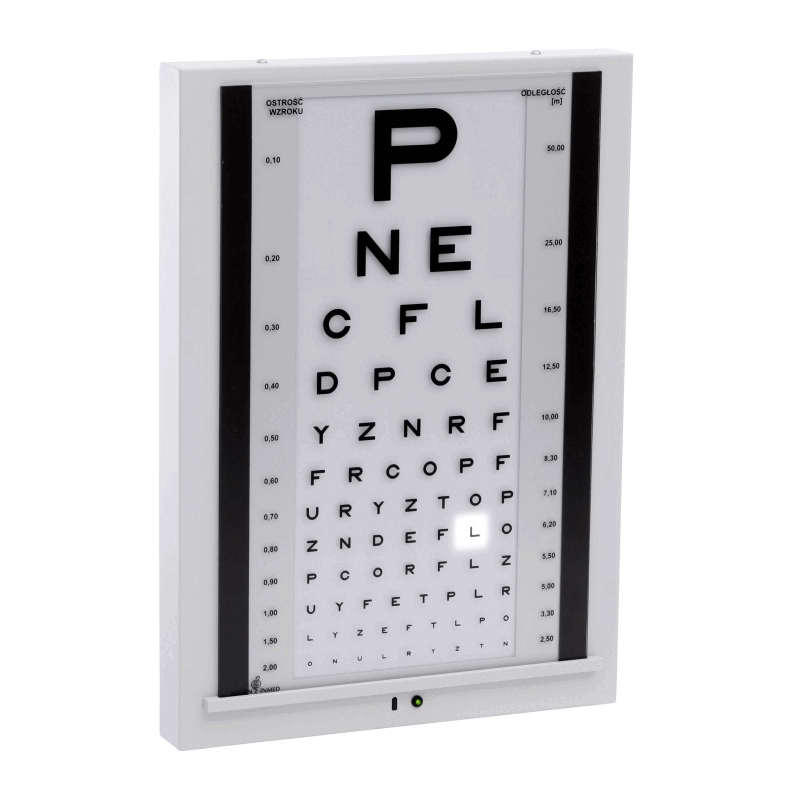

Snellen OKO eye chart with remote control
The remote control features six buttons that allow for the following functions:
Optotype activation
Highlighting an entire row of characters
Highlighting a selected character
Selecting the type of highlighting
Changing the operation mode (row/character selection)
Blanking the optotype
Selection of cursor movement direction
Automatic deactivation of backlighting after 5 minutes of inactivity
Available Optotypes (One optotype is included with the board at the time of purchase)
Learn more about OKO eye chart
An eye chart is a diagnostic tool used by ophthalmologists and optometrists to assess visual acuity.
There are two main types of eye charts:
Electronic eye charts, which offer backlighting and remote control functionality for precise and convenient testing.
Standard paper charts, which display various letters, numbers, or symbols in different sizes to evaluate vision clarity.
 How does an eye exam with the use of an eye chart work?
How does an eye exam with the use of an eye chart work?
(Expand the list to see more information.)
During an eye test, the patient is asked to read or recognize symbols on the chart from a specific distance. This process helps the ophthalmologist assess the patient’s ability to identify letters, numbers, or symbols of varying sizes.
The test result is expressed as a visual acuity coefficient, which determines the clarity of vision and helps identify potential vision impairments.
 For what purpose are eye charts used?
For what purpose are eye charts used?
(Expand the list to see more information.)
Eye charts are used in a variety of contexts, including during standard eye examinations, during vision screening, and to monitor the progress of treatment or correction of vision problems with eyeglasses or contact lenses. The best known ophthalmic chart is the Snellen chart, but there are many other variations, including children's charts, "E" shaped charts (Snellen hooks), and charts with symbols for patients who do not know the alphabet.
 Hermann Snellen
Hermann Snellen
(Expand the list to see more information.)
Hermann Snellen, a Dutch ophthalmologist, introduced his eye test in 1862, and his method is still widely used today. He designed special vision test charts featuring optotypes of varying sizes to assess visual acuity at a specific distance. Acuity is measured by the ratio of the distance from which the patient can see the optotype to the distance from which it should be visible.
It is also worth noting that the Snellen test was introduced 10 years before optometrist Ferdinand Monoyer developed the concept of diopters.
Interestingly, the optotypes designed by Snellen are commonly used on road signs, advertisements, and outdoor signage, where the size of the symbols is adjusted to ensure readability from a designated distance. This simple yet effective approach continues to play a crucial role in vision assessment.
 What is the difference between the classic eye chart and the modern OKO eye chart from Meden-Inmed?
What is the difference between the classic eye chart and the modern OKO eye chart from Meden-Inmed?
(Expand the list to see more information.)
While the classic eye chart features standard letters, numbers, or symbols in various sizes and levels of detail, the OKO eye chart offers a wider variety of optotypes and enables quick optotype changes. This flexibility is particularly beneficial for examinations involving different age groups or specific patient needs. Additionally, the Meden-Inmed eye chart is equipped with a modern light source using light-emitting diodes (LEDs), enhancing visibility and ensuring optimal illumination during testing.
Technical data:
| Dimensions: | 560 x 395 x 60 mm |
| Optimal test distance: | 5 m |
| Light source: | light-emitting diodes (LEDs) |
| Remote control included: | Yes |
| Weight: | 6 kg |
| Power supply: | 230 V, cable length 3m |
| Warranty: | 24 months |
Video presentation:
Update: 11-03-2025, time 13:15
Safety information:
Product compliance details in accordance with Product liability (GPSR)

